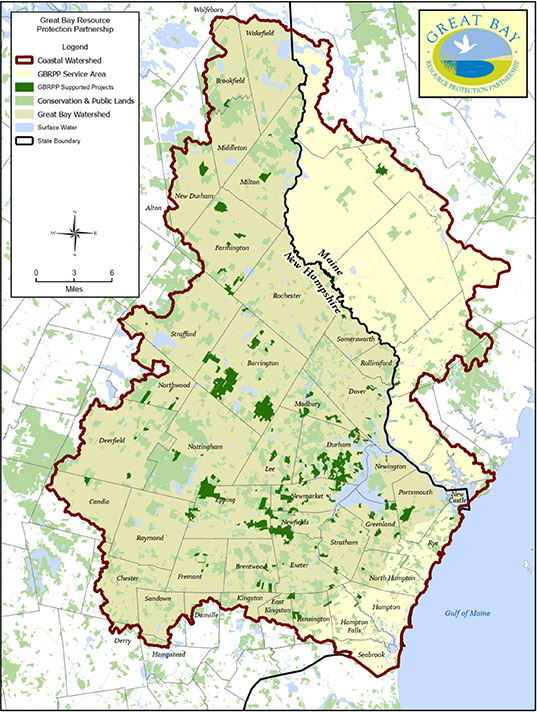The Partnership assists with large-scale land protection in the coastal watershed, assembling unfragmented blocks of natural lands, protecting a suite of critical habitats and natural resource systems. The steady progress of this collaborative effort has contributed to over 112,000 acres of conservation land in the coastal watershed. The NH Coastal Watershed Conservation Plan’s 15-year goal (2020-2037) is to permanently protect an additional 60,000 acres of priority lands.
Successful land conservation begins with a science-based approach to identify the most significant lands in the watershed. Land Trusts and public entitles protect priority lands through the purchase or donation of fee interest and conservation easements. The Partnership provides support to these conservation partners by providing technical assistance, funding for transaction costs, support for acquisition and donations, and collaboration and funding support for stewardship.
Technical assistance from natural resource experts provides evaluations for prospective conservation properties.
Transaction costs associated with land conservation projects are funded through the Land Protection Transaction Grant Program. Since 2014, grants have been awarded to land trusts and municipalities for the transaction costs of land conserved through the acquisition or donation of land and conservation easements.
Acquisition funding for priority conservation projects are supported by the Partnership. For example, land protection acquisition funds from the North American Wetland Conservation Act Grants and the National Oceanic and Atmospheric Administration permanently protected 109 properties totaling over 6,100 acres, leveraging $16.4 million in additional funding (1997 – 2014).
Stewardship support for protected conservation lands is coordinated from a landscape scale perspective that respects the integrity of the entire ecosystem.
This collaborative effort has resulted in steady progress, contributing to the total of 112,270 conserved acres in the NH coastal watershed. Conserved properties have protected some of the largest unfragmented blocks of natural lands in the watershed that include agricultural lands, extensive upland forests, grasslands, diverse freshwater and estuarine habitats, and early successional habitat critical to the viability of many wildlife species of concern.

